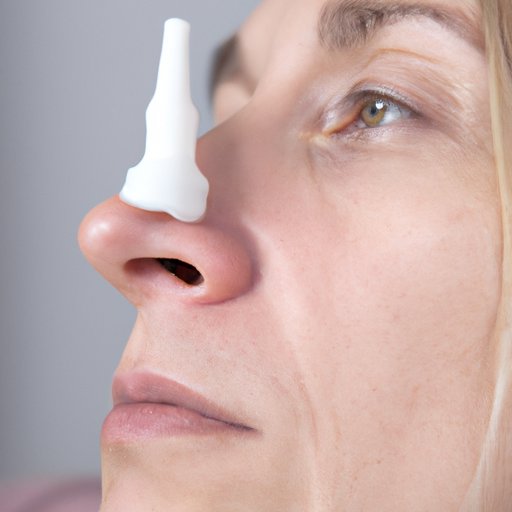Introduction
Breathing through your nose can have numerous benefits for your overall health. Not only does it provide more oxygen to your body, but it also filters out pollutants, such as dust and pollen, that can irritate your lungs. Additionally, nasal breathing is important for maintaining the proper balance of moisture in your airways, which is essential for healthy respiratory function. Therefore, it is important to strive to improve your nasal breathing and make it easier to breathe through your nose.

How to Improve Nasal Breathing
The first step in improving your nasal breathing is understanding the science behind it. Nasal breathing occurs when air is inhaled through the nostrils and passes through the nasal cavity before entering the lungs. The nasal cavity is lined with mucous membranes that contain tiny hairs called cilia, which help to filter out pollutants and warm the air before it enters the lungs. Additionally, this process helps to moisten the air and make it easier to breathe.
To further improve nasal breathing, there are several exercises you can do to strengthen the muscles of your nasal passages. These exercises include blowing your nose gently, using nasal strips to open up the nasal passages, and pinching the sides of your nose while inhaling and exhaling deeply. Additionally, certain yoga poses, such as the lion pose, can help to strengthen the muscles of the face and neck, which can improve nasal breathing.
If your nasal passages are blocked due to allergies or a cold, there are several tips you can try to help clear them. Drinking plenty of fluids, taking a hot shower, and using a humidifier can all help to loosen up mucus and clear your sinuses. Additionally, using a saline solution or neti pot can help to flush out any allergens or irritants that may be causing your nasal congestion.
Common Causes of Nasal Congestion
Nasal congestion is a common problem that can make it difficult to breathe through your nose. There are several different causes of nasal congestion, including allergies, cold and flu viruses, a deviated septum, and rhinitis. Allergies can cause inflammation of the nasal passages, making it difficult to breathe. Cold and flu viruses can also cause nasal congestion, as they can cause the nasal passages to swell and produce excess mucus. A deviated septum is a structural abnormality of the nasal passages that can cause one side of the nose to become blocked. Finally, rhinitis is an inflammation of the lining of the nose that can cause symptoms such as sneezing, itching, and a runny nose.

Treatments for Chronic Nasal Congestion
If you suffer from chronic nasal congestion, there are several treatments available to help relieve your symptoms. Nasal sprays and decongestants can help to reduce inflammation and open up the nasal passages. In some cases, surgery may be necessary to correct a deviated septum or other structural abnormalities. Additionally, there are several alternative treatments that can help, such as acupuncture, herbal supplements, and essential oils.
Conclusion
Nasal breathing has numerous benefits for your overall health, including providing more oxygen to your body and filtering out pollutants. To improve your nasal breathing, it is important to understand the science behind it and practice exercises to strengthen the muscles of your nasal passages. Additionally, there are several common causes of nasal congestion, such as allergies, cold and flu viruses, a deviated septum, and rhinitis. Finally, there are several treatments available for chronic nasal congestion, such as nasal sprays, decongestants, surgery, and alternative treatments.
(Note: Is this article not meeting your expectations? Do you have knowledge or insights to share? Unlock new opportunities and expand your reach by joining our authors team. Click Registration to join us and share your expertise with our readers.)
